All products featured are independently chosen by us. However, SoundGuys may receive a commission on orders placed through its retail links. See our ethics statement.
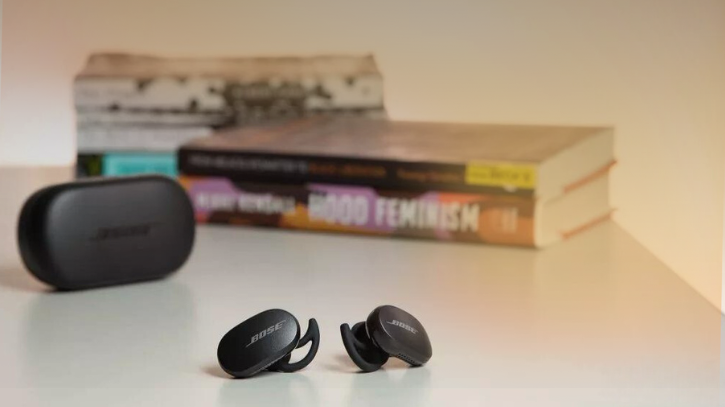
Bose QuietComfort Earbuds review
September 26, 2024
Bose QuietComfort Earbuds
Wait, you're on the wrong review!
- This review is for the now discontinued Bose QuietComfort Earbuds from 2020. Make sure to head over to our review of the new Bose QuietComfort Earbuds (2024).
The hunt for the perfect noise canceling earbuds seems never-ending. The Apple AirPods Pro 2 are the obvious choice for iPhone owners, but Bose hopes you’ll consider the Bose QuietComfort Earbuds too. Whether you’re a die-hard Apple fan or a devoted Android user, these earbuds are worthwhile. Bose believes its active noise canceling (ANC) earphones are nothing short of genius, and the price reflects that. We spent a week with the Bose QC Earbuds to see how it compares to the stiff competition.
Editors note: This review was updated on September 26, 2024, to note that the original Bose QuietComfort Earbuds have now been discontinued and replaced by the new Bose QuietComfort Earbuds (2024).
Commuters and globetrotters should get the QuietComfort Earbuds because it features excellent active noise canceling (ANC), rivaling Sony’s WF-1000XM4 earphones. You don’t have to travel to an office to get a lot out of these earbuds, though. Remote workers will enjoy the ANC, too, and be able to use the earbuds for conference calls.
What is it like to use the Bose QuietComfort Earbuds?
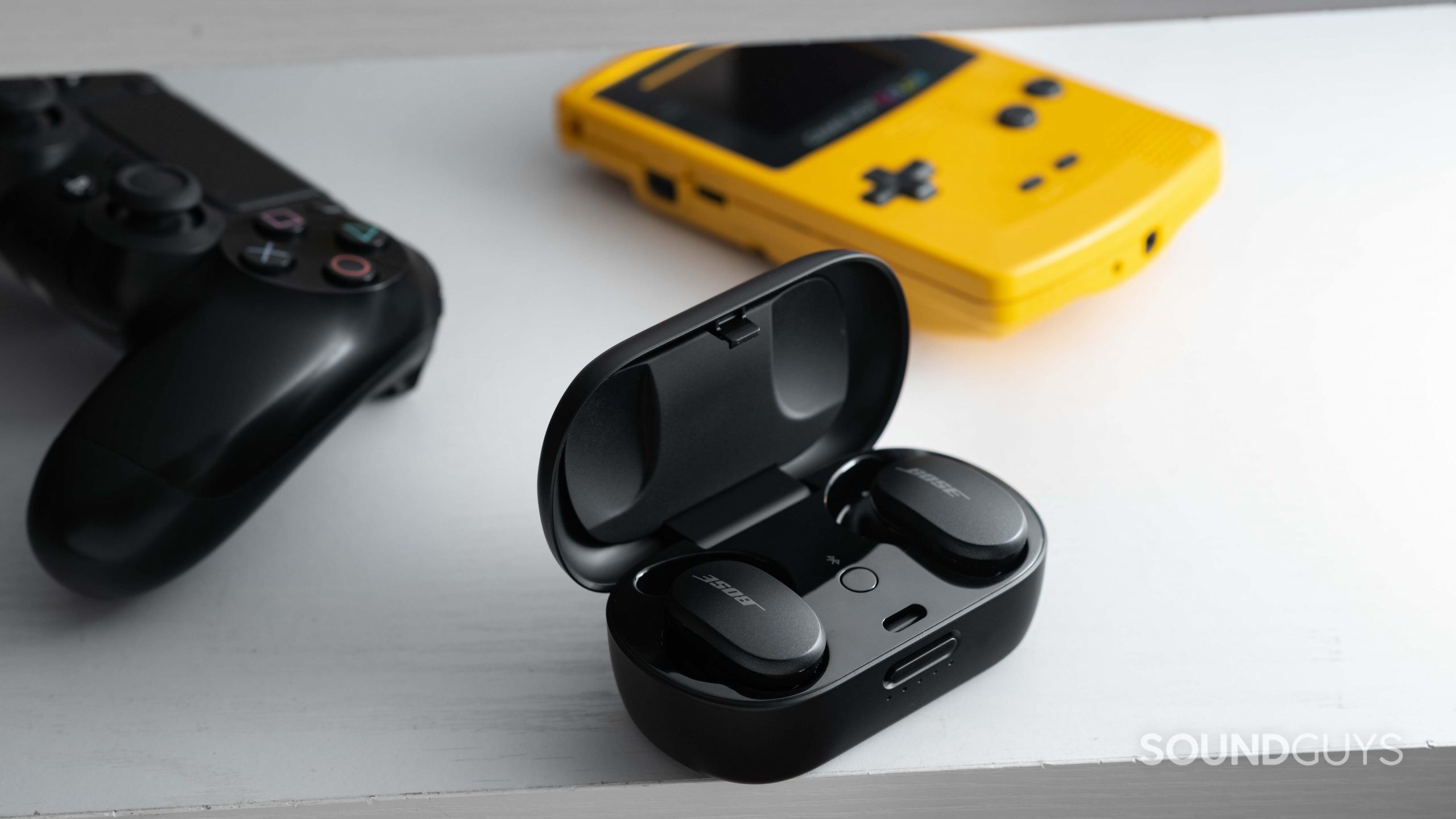
The Bose QuietComfort Earbuds are attractive yet bulky and come in black or white. The design resembles the Bose Noise Canceling Headphones 700: discreet with subtle curves. Bose caught plenty of flak for its original true wireless earbuds, which are laughably bulky. While Bose scaled down its QC Earbuds, these still protrude from the ear more than most alternatives.
A chunky charging case accommodates the earphones and shares the same matte black exterior. You can easily clean the case by wiping it with a cloth, which you’ll need to do a few times a week since it collects oils quickly. Four LEDs line the case and indicate its remaining battery levels. Inside, a button rests between the two earbud cutouts, and you can press it to manually initiate pairing mode.
How to control the Bose QuietComfort Earbuds
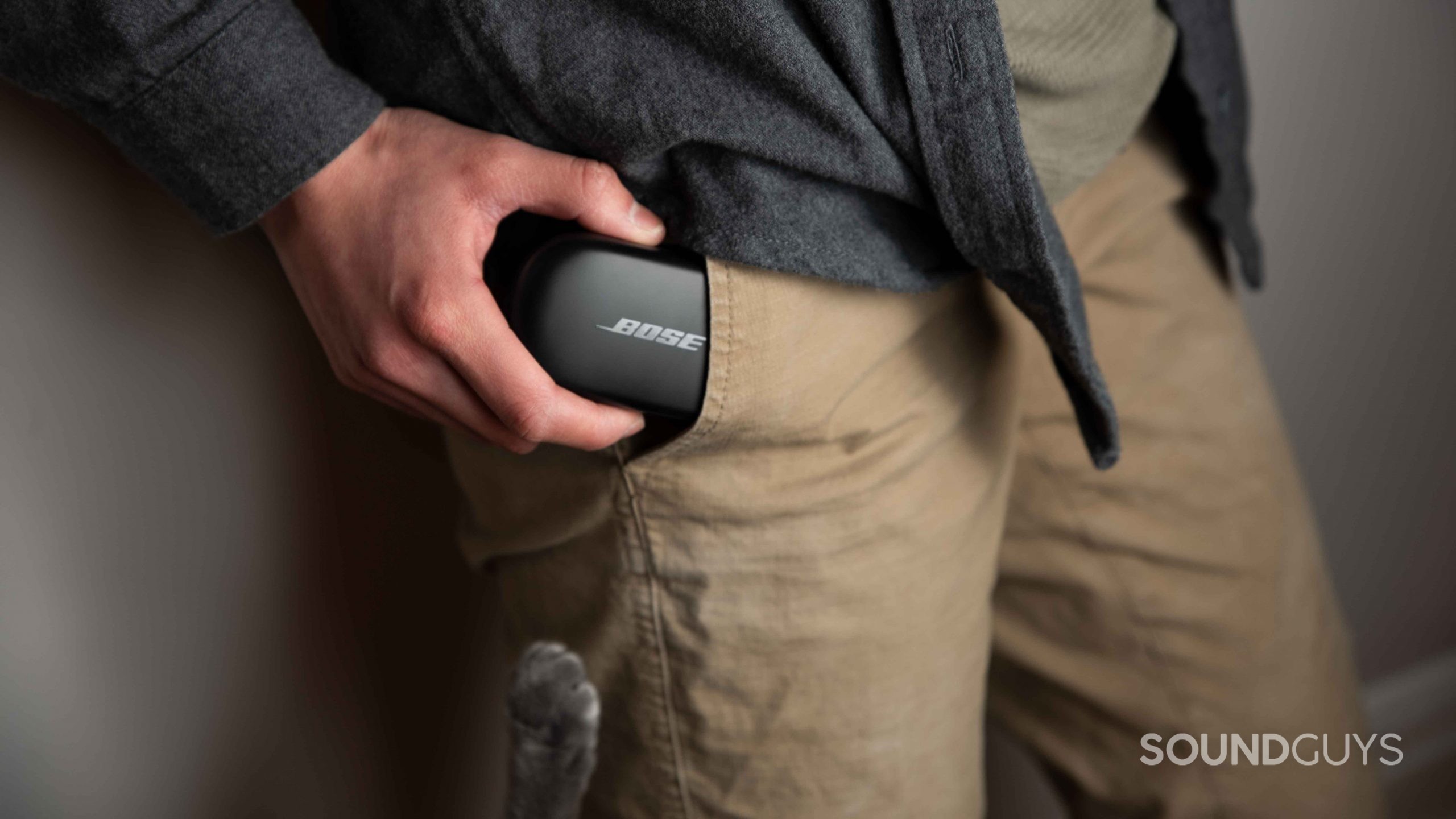
Bose’s earbuds feature touch controls only, and since the series of taps and swipes aren’t always intuitive, we made a table of the controls below.
| Action | Left side | Right side |
|---|---|---|
| Action Two taps | Left side Cycle through favorites (ANC modes) | Right side Pause/play music |
| Action | Left side | Right side Pickup/end phone call |
| Action Hold | Left side Skip song | Right side Access smart assistant |
| Action | Left side Check battery level | Right side Reject incoming calls |
| Action Remove/insert | Left side Pause/play music | Right side Pause/play music |
| Action | Left side Auto Transparency mode (remove) | Right side Auto Transparency mode (remove) |
| Action Swipe | Left side | Right side Volume up/down |
Should you download the Bose Music app?
When you open the case for the first time, the earbuds automatically enter pairing mode. For the best experience, you should download the Bose Music app. This is required to quickly switch between devices, reconfigure the controls, create a custom EQ, and adjust ANC levels. You can set three quick favorite ANC/transparency mode levels and cycle through them by double-tapping the left earbud.
What Bluetooth codecs does Bose QuietComfort Earbuds support?
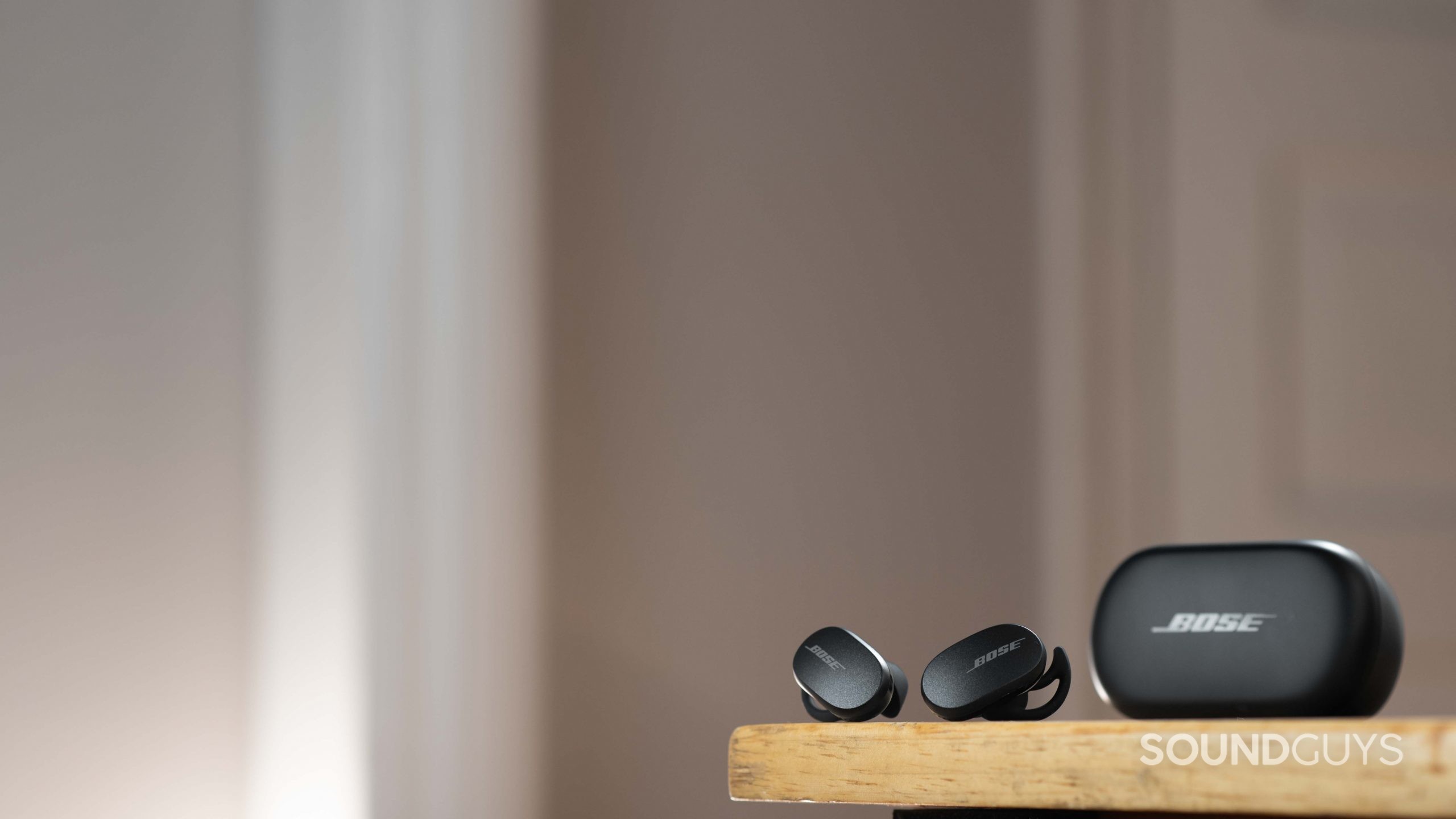
Just like the Bose Sport Earbuds, the QuietComfort Earbuds use Bluetooth 5.1 and operate within a nine-meter range. Whether you take the earbuds into the great outdoors or listen from your home office, you don’t have to worry about connection drops.
As with all modern wireless Bose headsets, the QuietComfort Earbuds support two Bluetooth codecs: SBC and AAC. This is very good news for iPhone owners as iOS easily handles the high-end AAC codec; Android, on the other hand, has historically had trouble streaming over AAC. If streaming quality inconsistencies become too frustrating, you can force SBC from your Android phone’s developer settings.
Bose firmware updates seem to go wrong quite often for listeners, and this can interfere with your ability to use the earphones. Fortunately, it’s easy to fix a firmware update gone awry.
- Put the buds in the charging case.
- With a computer, navigate to the Bose Updater page online. You may have to install an updater program.
- With the included USB-A to USB-C cable, connect the case to your computer.
- Follow the update instructions and allow the site to update the firmware of your charging case.
- Historically, botched firmware updates with a smartphone have accounted for poor ANC, weird sound, and broken features. If you find yourself wondering if this has happened to you, a reinstall of the firmware takes about 3 minutes.
How long does the battery last on the Bose QuietComfort Earbuds?
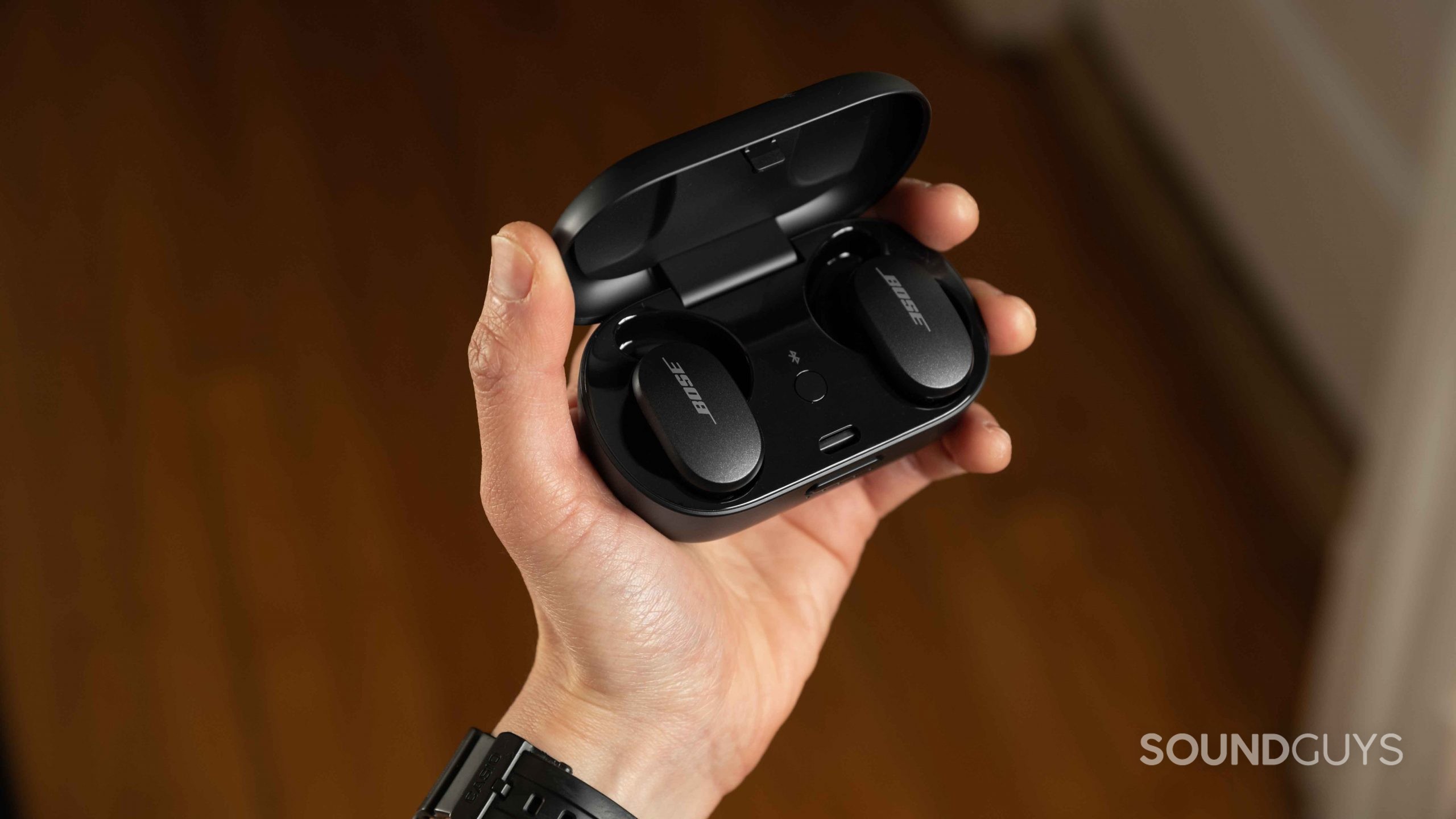
We subjected the Bose QuietComfort Earbuds to a constant output of real music peaking at 75dB(SPL), and they lasted 5 hours 29 minutes with active noise canceling enabled. This is about average for wireless ANC earbuds.
You can quickly charge the earbuds by placing them in the case for just 15 minutes, giving you 120 minutes of playtime. If you need to complete an entire charge cycle of the earbuds, you have to set aside two hours. Charging the case completely takes three hours via USB-C. The case also supports Qi wireless charging, though your specific mat limits speeds.
How well do the Bose QuietComfort Earbuds cancel noise?
Loading chart ...
If you commute regularly, the Bose QuietComfort Earbuds’ active noise canceling is a huge asset to you. It effectively reduces continuous droning sounds like the grind of a train car and the roar of an engine to sound up to 90% quieter. I am shocked at how well the earbuds cancel out the noise emitted by my stationary bike setup. Normally, the resistance mechanism rattles the whole apartment when I bike, but I can hardly hear anything when ANC is set to 10 on the Bose QC Earbuds.
The sliding scale allows you to adjust from levels 1-10 and inversely controls the transparency mode and ANC. As you decrease the ANC intensity, you increase the degree of ambient passthrough audio. It took me a moment to realize this, as the ambient noise mode sounds quite good compared to its competitors. It’s among the most natural-sounding executions of transparency hearing, and I prefer it over others like the Nothing Ear 1.
How does the Bose QuietComfort Earbuds sound?
Loading chart ...
The Bose QuietComfort Earbuds sound quite good, and, as you can see above, the frequency response closely follows our headphone preference curve. Most listeners will enjoy this sound profile, which is popular among other high-quality consumer headsets. As with any headset, sound quality depends on your ability to get a good fit with the earbuds. Bose provides three ear tip sizes (small, medium, and large), which should accommodate most ear canals. This is important for active noise canceling and optimal bass reproduction.
Lows, mids, and highs
Kishi Bashi’s song “Honeybody” sounds great through the Bose QC Earbuds, which reproduces the bass notes clearly even during instrumentally busy moments (1:42). Just a few seconds later, the high-pitched “Ohs” manage to stand out from the cheery din, in large part due to the amplified high-midrange. Treble notes occasionally come through too loudly, noticeable in Snail Mail’s song “Speaking Terms.” If you skip to the end of the second hook at 2:20, Lindsey Jordan’s voice is harder to distinguish from the cymbal hits than it should be.
At launch, the Bose QuietComfort Earbuds did not include any native EQ customization. However, the following Bose Music App updates now include custom EQ functionality:
- iOS: 5.0.2
- Android 5.0.1
- Firmware version 2.0.7
After updating, you can press the “EQ” button on the home screen of the Bose Music App to adjust the sound of the earbuds to your exact preference.
Can you use the Bose QuietComfort Earbuds for phone calls?
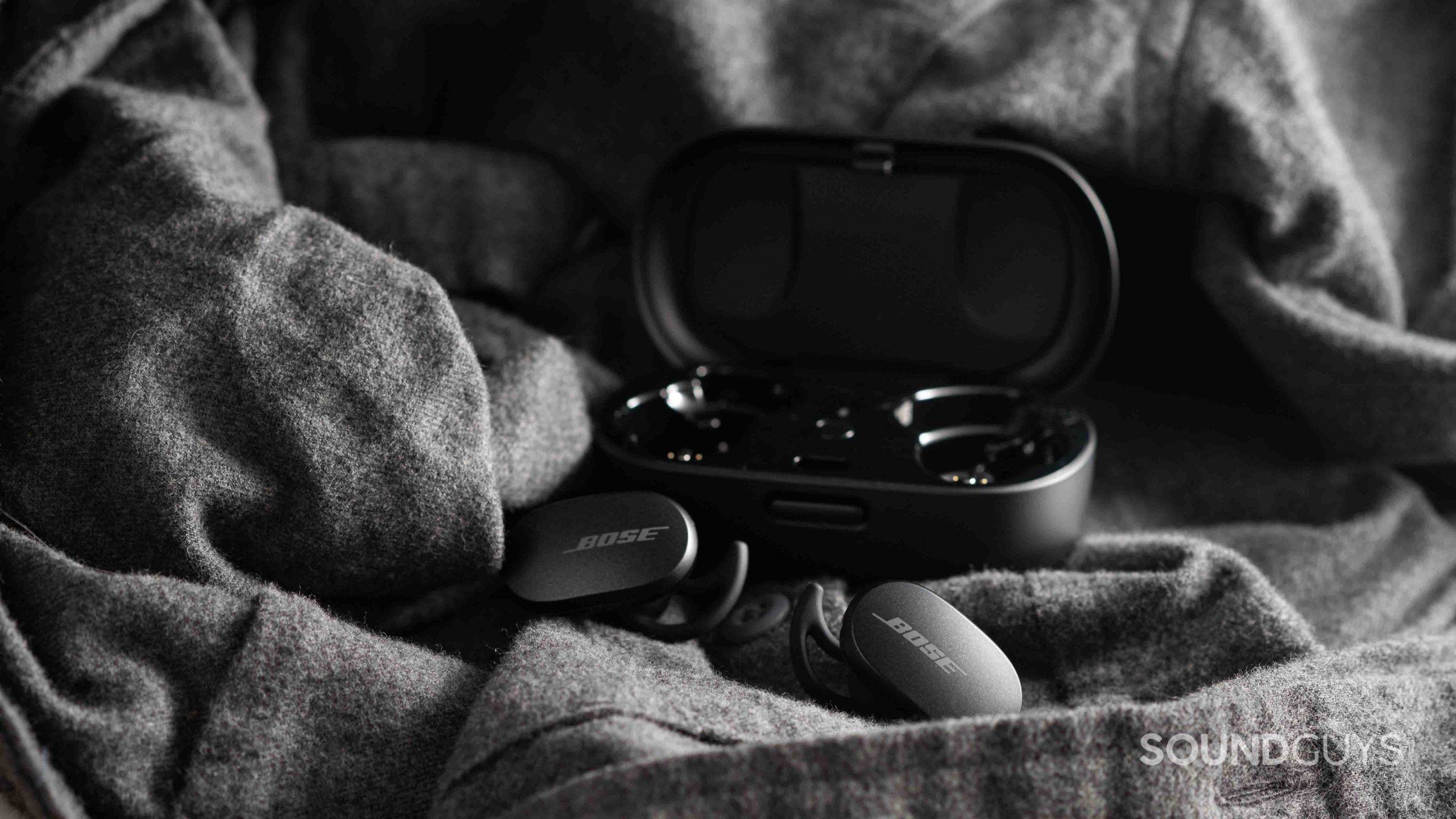
The earbuds’ microphone system is okay, but a long way from the best we’ve heard from a TWS earbud, though it can get you through phone calls. Speech intelligibility is never an issue with the Bose QuietComfort Earbuds microphone array, but some mild distortion occurs.
Take a moment to listen to our microphone recording and rate the quality of the recording. Doing so helps our readers better understand how it sounds relative to a huge index of products.
Bose QuietComfort Earbuds microphone demo (Ideal conditions):
Bose QuietComfort Earbuds microphone demo (Office conditions):
Bose QuietComfort Earbuds microphone demo (Street conditions):
Bose QuietComfort Earbuds microphone demo (Windy conditions):
How does the microphone sound to you?
Should you buy the Bose QuietComfort Earbuds?
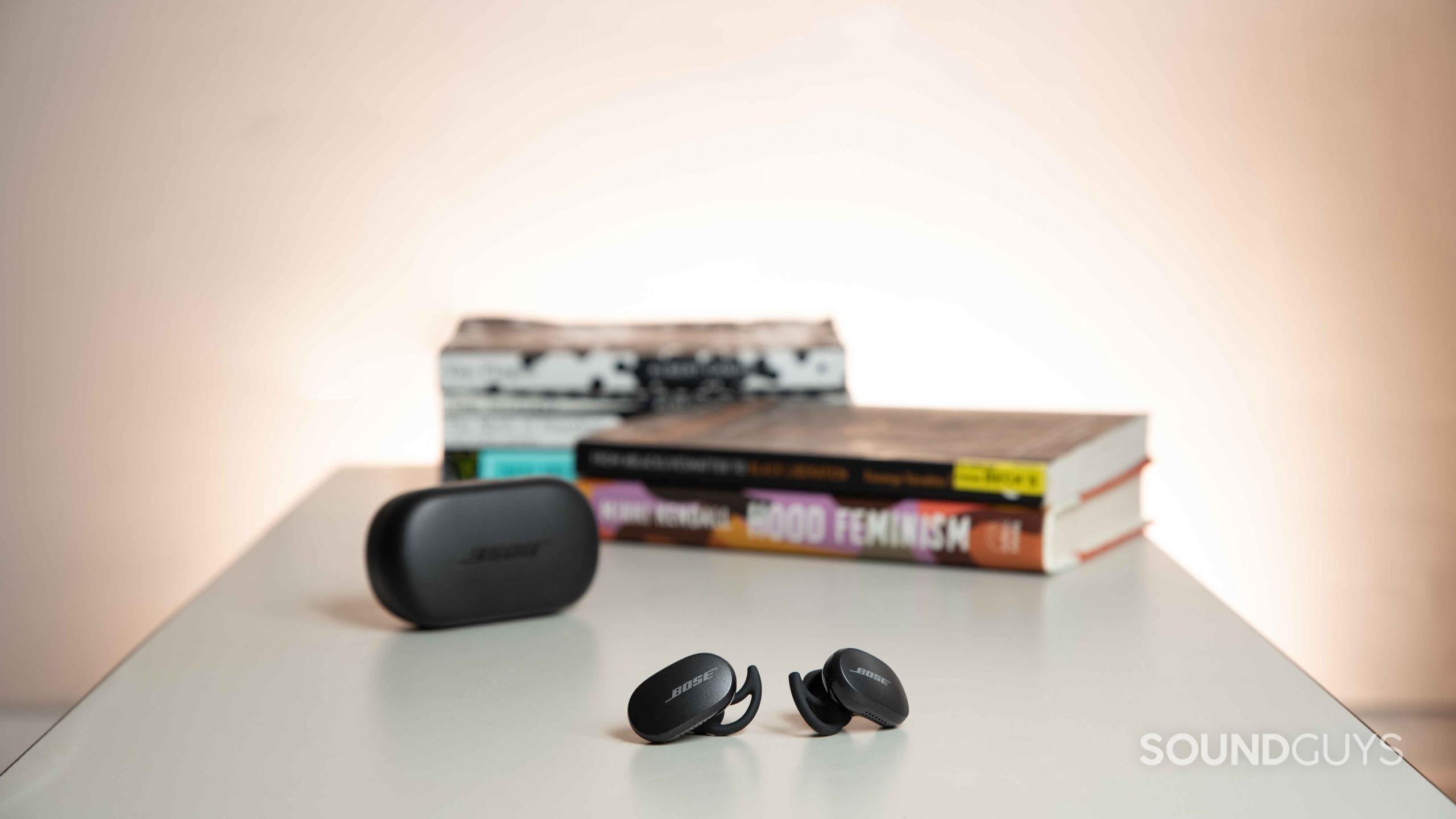
The Bose QuietComfort Earbuds can do everything, but you’ll have a hard time finding them today. Bose discontinued the earphones shortly after releasing the QuietComfort Earbuds II. You can’t find certified QC Earbuds on Bose’s website or through third-party vendors like Amazon.
If you want to buy the QC Earbuds, you’ll have to pony up for the Bose QuietComfort Earbuds II. These earbuds include new AI-powered features, better ANC, and a new design. Unfortunately, the QC Earbuds II has a very wonky frequency response that heavily boosts bass.
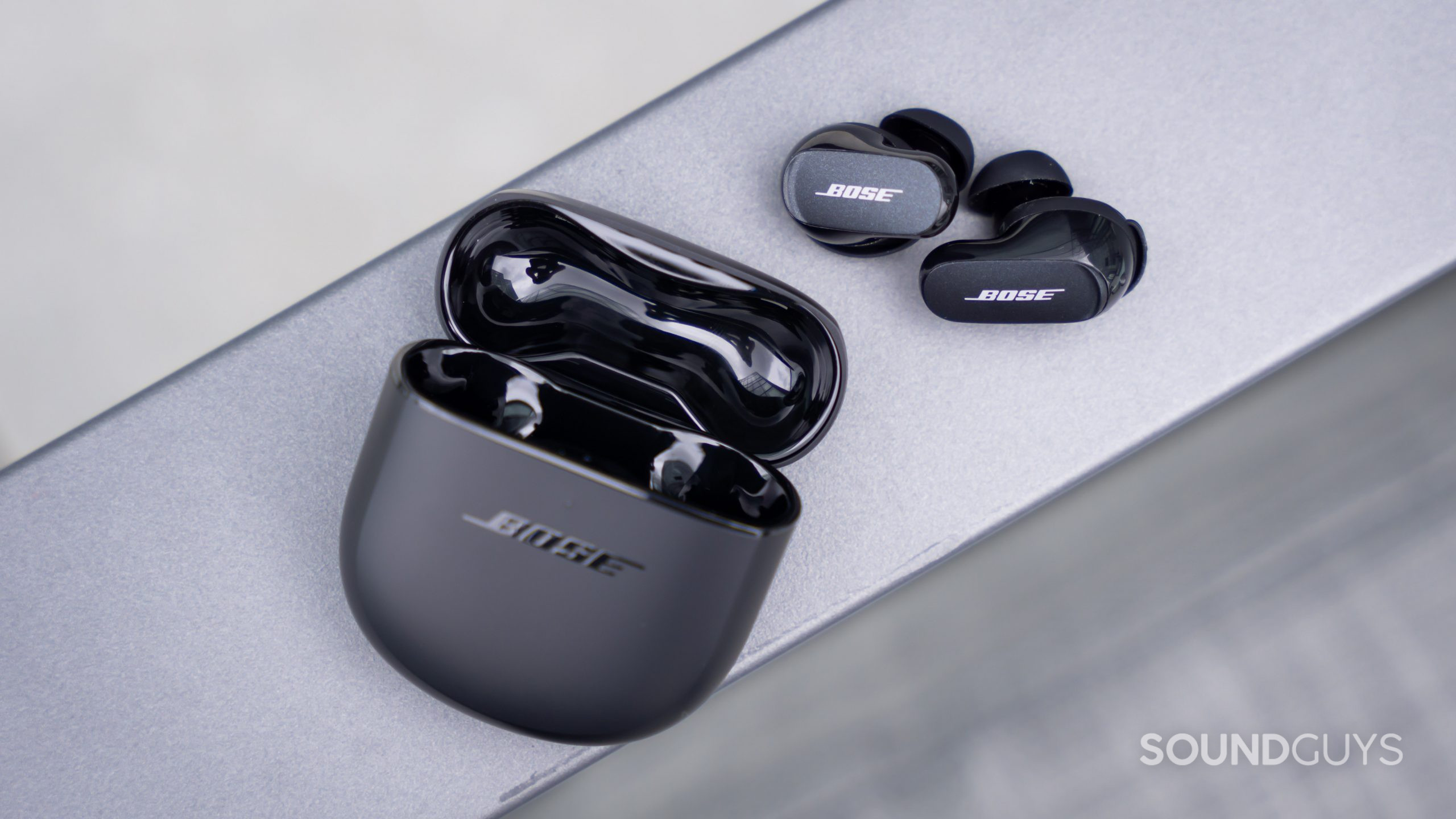
If you don’t mind the extra bass or embrace it, there’s still a bit to like about the new earphones, namely the lighter weight and more compact build. The second-gen QC Earbuds have a much smaller footprint, making the whole thing more pocketable and comfortable.
The QC Earbuds II debut CustomTune and ActiveSense. CustomTune adjusts the sound and ANC to your ear canal shape for the best possible performance. ActiveSense is another new feature that improves Bose’s Aware Mode (aka transparency mode). With Active Sense, the earbuds will pipe in environmental sound while ensuring that unusually loud, unpredictable sounds like construction machinery are canceled.
Upon their release, the QC Earbuds II used Bluetooth 5.3 and the same SBC and AAC codecs as the Bluetooth 5.1 QC Earbuds. Firmware updates have led to the possibility of utilizing the aptX Lossless codec with the new QuietComfort Earbuds II with compatible devices. This would tip the QC Earbuds II more favorably for Android users.

Editor’s note: this Bose QuietComfort Earbuds review was originally written with firmware version 1.0.7-9846+620b71c and app version 4.2.4.
Should you buy the Bose Sport Earbuds instead of the Bose QC Earbuds?
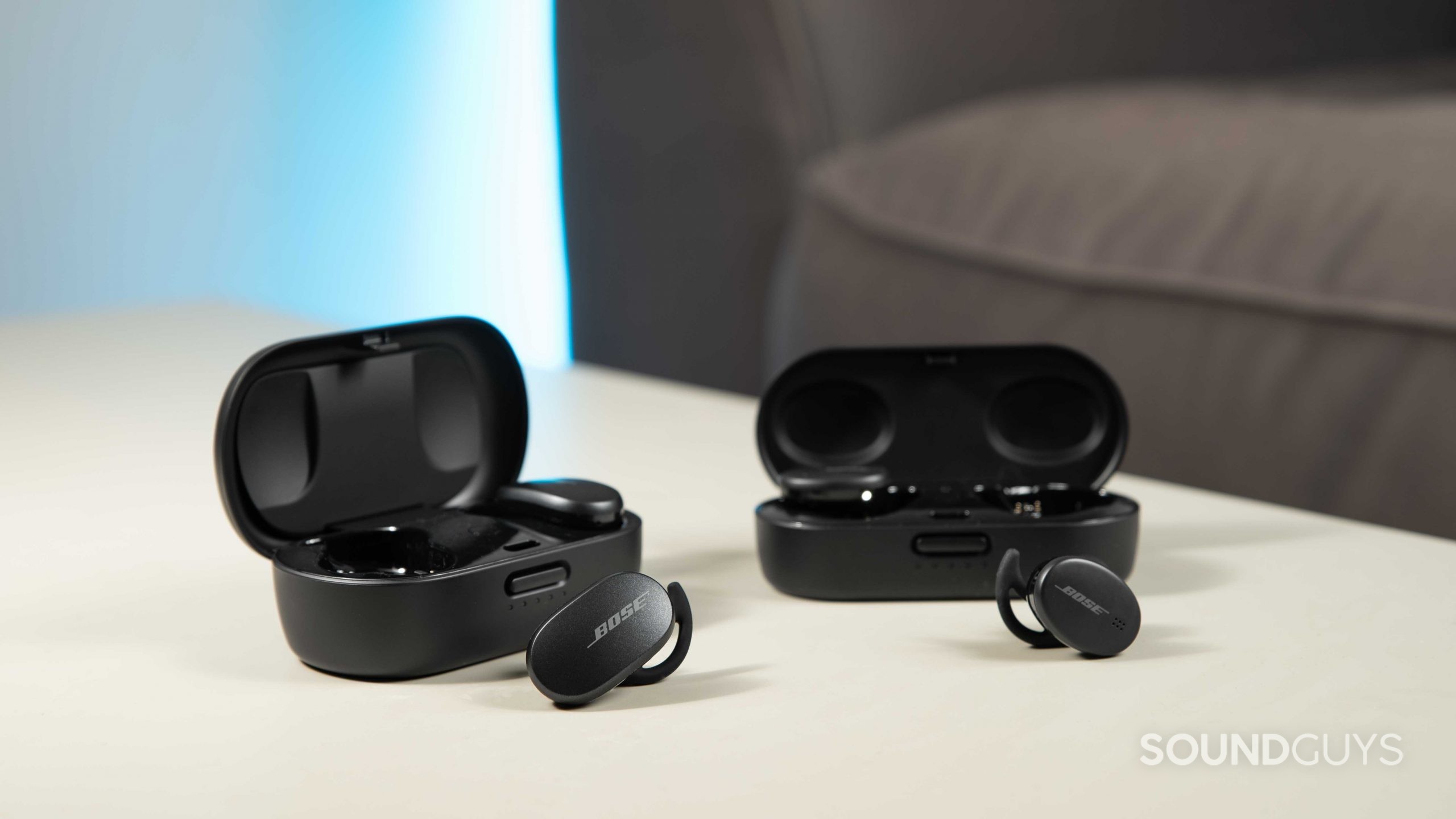
Unlike the QuietComfort Earbuds, the Bose Sport Earbuds ($165 at Amazon) lack noise canceling and are explicitly intended for athletes. Otherwise, they share more similarities than differences: both earbuds use the StayHear Max ear tips; both earbuds feature touch controls; and both earbuds have USB-C charging cases.
There are some fine differences to respect, too. For one, you can wirelessly charge the Bose QuietComfort Earbuds case, which is a good backup in case the USB-C input breaks. Additionally, battery life is a few minutes longer with the QC Earbuds (ANC on) than the Sport Earbuds, a possible benefit of the larger housings.
Unfortunately, both sets of earbuds are discontinued, and you’ll have difficulty finding them from third-party retailers.
What should you get instead of the Bose QuietComfort Earbuds?
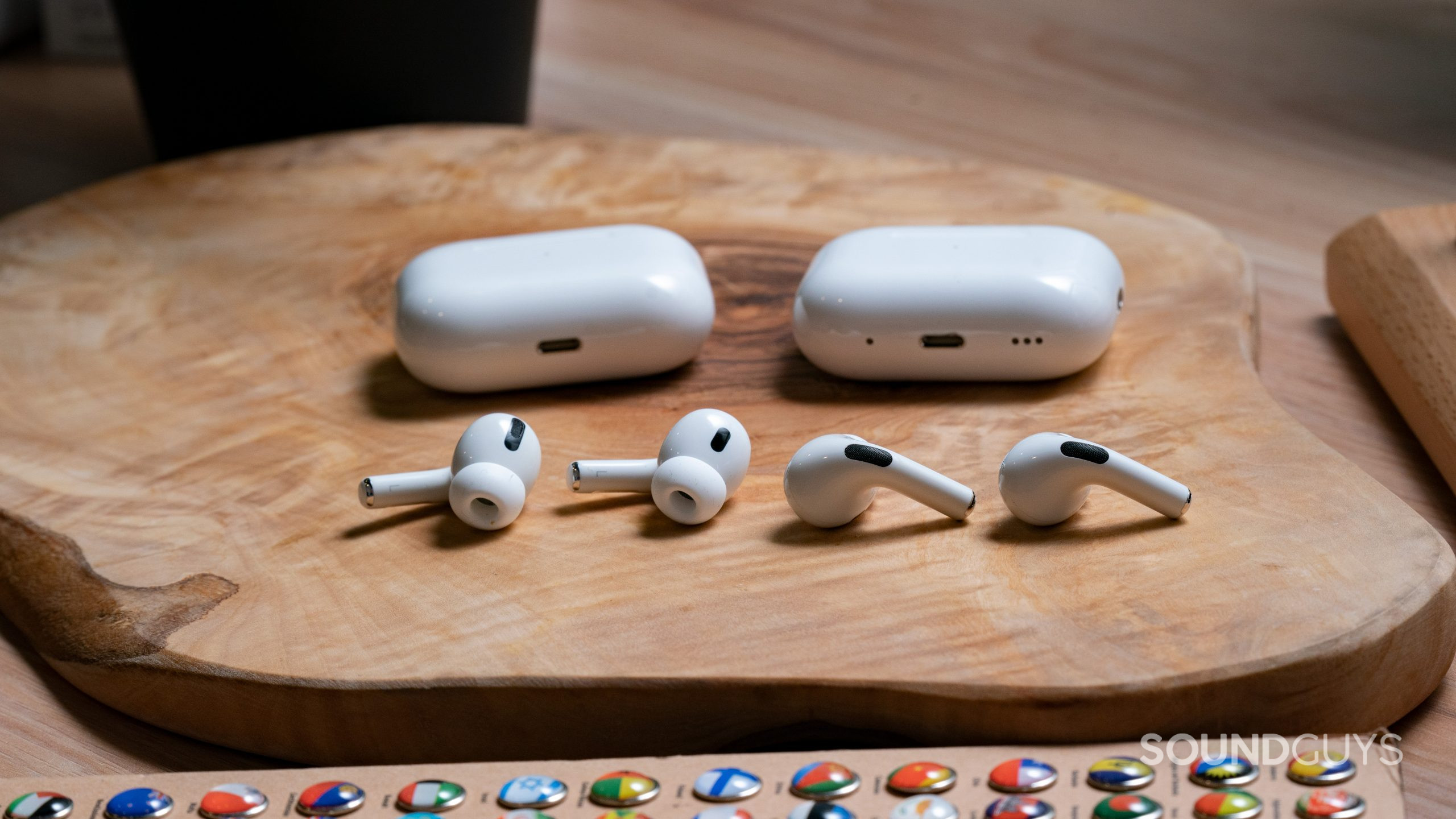
If you’re an iPhone owner not yet sold on the Bose QuietComfort Earbuds, don’t worry: you can snag the AirPods Pro 2 ($239 at Amazon). Adaptive Transparency mode operates like Bose’s Aware Mode with Active Sense found on the QC Earbuds II. The AirPods Pro 2 also have great noise canceling and sound quality. The IPX4 rating covers the case and earbuds, which is a nice touch. Apple also added a speaker to the bottom of the case for easy locating within a room.
You control the Samsung Galaxy Buds 2 Pro with a series of taps, presses, and holds. Android phone owners can try their luck with the Samsung Galaxy Buds 2 Pro ($179 at Amazon) or Google Pixel Buds Pro ($199 at Amazon) instead of Apple’s flagship earphones.
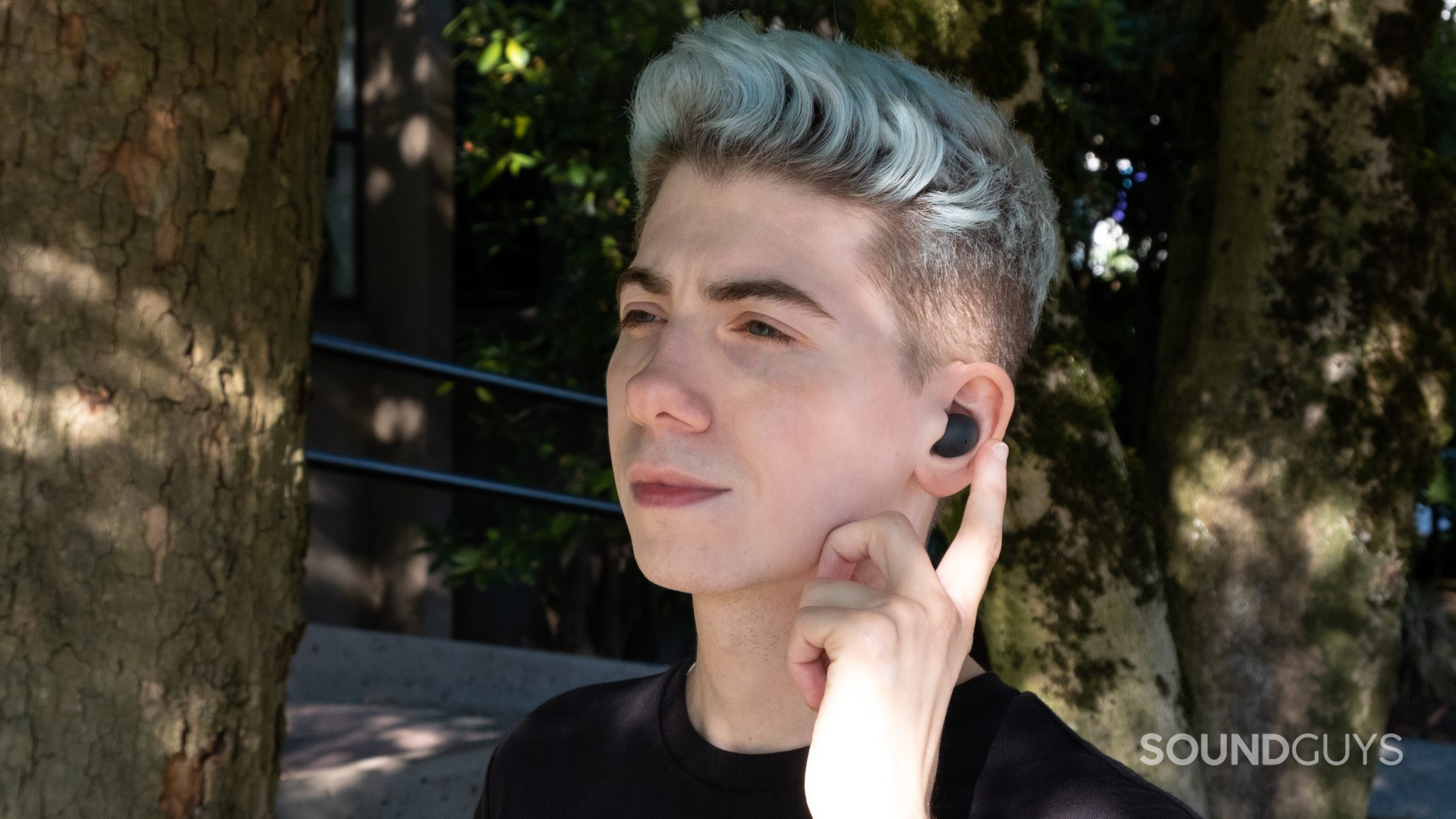
Samsung’s buds have an IPX7 rating and 360 Audio. Meanwhile, Google’s buds allow you to experience Google Translate right in your ear, so long as you have compatible hardware and applications. Both the Galaxy Buds 2 Pro and Pixel Buds Pro support the SBC and AAC codecs, but only Samsung supports the Samsung Seamless Codec for 24-bit audio from a compatible Samsung device.
Frequently asked questions about the Bose QuietComfort Earbuds
The Bose QC Earbuds do not have Google Assistant integration, and instead are programmed to use your smartphone’s default smart assistant. If you have an iPhone, the QuietComfort Earbuds will default to Siri, and Bixby for Samsung.
Bluetooth 5.1 has more accurate location features than Bluetooth 5.0, which makes it easy for your smartphone to understand the directionality and precise location of your Bose earbuds. This is great for something like “find my earbuds,” but oddly enough, version 4.2.4 of the Bose Music app lacks this feature.
Bluetooth 5.1 is also slightly more energy efficient than Bluetooth 5.0, thanks to a more advanced caching system. This translates to faster auto-connect times. Both Bluetooth 5.0 and 5.1 are part of the Bluetooth Low Energy (LE) standard. They aren’t part of LE Audio, which will initially see support in Bluetooth Core Specification 5.1.